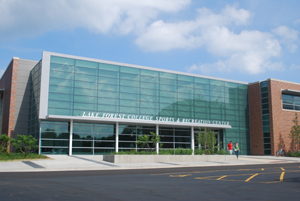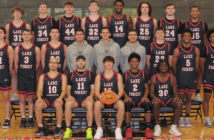The ultimate goal is to graduate with a degree. However, with the four years students are given, it is also an opportunity to write a chapter in one’s life with experiences defined by more than just academic components.
College athletics are a necessary component of the college experience. Whether you are an athlete on the field or a student cheering feverishly in the stands, college athletics manages to unite campuses through their unrelenting pride for their school.
In recent weeks, the athletic budget at Lake Forest College has been labeled as $1500/student per year. This number has alarmed many students on campus. Many critics believe the amount allocated to clubs and organizations on campus is unfair. Clubs and organizations are given $60,000 annually, with much of this money going to student events.
While there are some clubs and organizations that host highly funded events, there are times where they get little attendance. In contrast, athletic events manage to garner sizeable crowds. For example, the Forester football game against Carroll last fall saw 1650 people in attendance.
Samantha Ryczek ’18 is a player on the women’s tennis team and a member of the Forester POM team. She is a firm believer that the college’s spending on athletics is justified. “I think the spending is justified because all collegiate athletic teams should be given the resources to succeed, not just DI teams,” stated Ryczek.
Forester men’s basketball player and Athletic Council President Matthew McPherson ’17 elaborated on the necessity for Lake Forest College to spend the amount they do on athletics. “The athletic budget is mainly comprised of travel expenses, protective equipment maintenance, and staff salaries. Each of these components are absolutely necessary for the functionality and survival of the athletic department.
Furthermore, the budget is comprised of the maintenance of the Sports and Recreation Center, which is available for all students. With the given budget allocated to athletics, student-athletes still are required to cover a variety of expenses on their own,” explained McPherson.
Ryczek, like all other athletes at the College, represent the college by promoting the college’s tradition of excellence as well as the epitome of a Forester. Every time athletes step out to the court or field, they are displaying the leadership, hard- work, and success that is something to celebrate at the College.
Ryczek also believes that clubs and organizations could show more reciprocation in their support for athletics at Lake Forest College. “Teams at LFC do not get much support. It seems that only athletes support other athletes. Maybe if a variety of clubs and organizations showed support for athletics, it would draw a different crowd,” explained Ryczek.
On the other hand, McPherson focused on the positivity that this controversy has caused at the College. McPherson sees it as an opportunity to see the reaping benefits it provides. Division III institutions, such as Lake Forest College, attract students with a high level of academic ability and pure passion for the sport they may participate in.
“By building athletics at these institutions, the members of the campus can appreciate growth in the community due to the contributions made by the student athletes. The student athletes at the College give back to the campus community in a variety of ways such as involvement in student organizations and community service,” said McPherson.
McPherson also sees this as an opportunity to continue the conversation and added, “I am welcome to continue the discussion on athletics with any students, staff, or faculty that are interested. My email is mcphersonmj@mx.lakeforest.edu.”
While the dollars spent on athletics will inevitably continue to bother many on campus, it is important for all to remember that athletics, in many ways, set the tone and builds a foundation for campus tradition and community.




